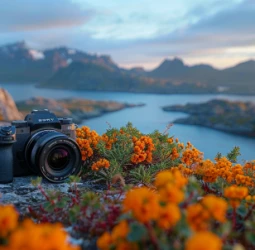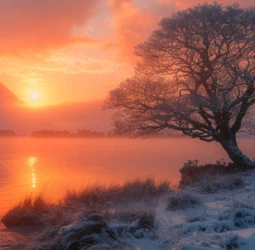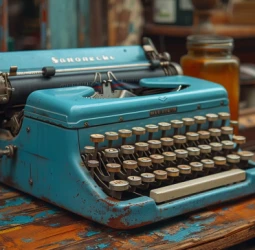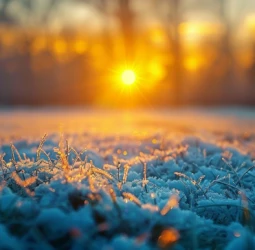Night photography is a popular genre among photographers, allowing for unique and breathtaking images of the world after dark. It is a challenging yet rewarding form of photography that requires knowledge of specific settings and techniques to capture stunning shots. In this article, we will delve into the world of night photography, discussing the essential settings and tips to help you master this art form.
One of the most crucial aspects of night photography is choosing the right camera settings. When it comes to capturing images in low light, it is vital to understand the three key elements that make up exposure: aperture, shutter speed, and ISO. The aperture refers to the size of the opening in your lens, while the shutter speed is the amount of time the camera's shutter remains open. ISO, on the other hand, indicates the camera's sensitivity to light.
One of the first things to consider when shooting at night is the aperture setting. In low light conditions, it is essential to use a wide aperture, such as f/2.8 or wider, to allow more light to enter the camera. This will result in a shallow depth of field, meaning only a small portion of your image will be in focus. However, this can also add a beautiful and dreamy effect to your images, making them more compelling.
The next setting to consider is the shutter speed, which determines how long the camera's shutter will remain open. When shooting at night, it is crucial to use a slow shutter speed to allow more light to enter the camera. A typical starting point for night photography is a shutter speed of 15-30 seconds, but it may vary depending on the available light and the effect you want to achieve. However, using a long shutter speed may also result in blurred images if there is movement in the frame. To avoid this, it is best to use a tripod to keep your camera steady and get sharp images.
Lastly, the ISO setting plays a significant role in night photography. As mentioned earlier, it indicates the camera's sensitivity to light. It is best to use a lower ISO setting, such as 100 or 200, to avoid noise or grain in your images. However, if you are shooting in extremely low light conditions, you may need to increase the ISO to allow more light into the camera. Keep in mind that a higher ISO setting can result in noisy images, so it is best to use it sparingly.
Apart from camera settings, there are a few other tips to keep in mind when venturing into night photography. Firstly, it is crucial to use a tripod to keep your camera steady and avoid blurry images. Additionally, you can also use a cable release or the camera's timer function to prevent any camera shake when pressing the shutter button.
Another helpful tip is to use manual focus instead of relying on autofocus in low light conditions. The camera may have a difficult time focusing in the dark, resulting in blurry images. By using manual focus, you have more control over the sharpness of your images.
One of the most exciting aspects of night photography is the use of light sources, such as streetlights, buildings, and moonlight. These can add a beautiful and dramatic effect to your images. Experiment with different compositions and angles to capture these light sources in your frame.
In conclusion, night photography is a challenging yet incredibly rewarding form of photography. With the right camera settings and techniques, you can capture stunning images that showcase the world in a whole new light. Remember to use a wide aperture, slow shutter speed, and a low ISO to allow more light into the camera. Additionally, using a tripod, manual focus, and utilizing light sources will help you capture compelling images. As with any form of photography, practice makes perfect, so get out there and start shooting!
One of the most crucial aspects of night photography is choosing the right camera settings. When it comes to capturing images in low light, it is vital to understand the three key elements that make up exposure: aperture, shutter speed, and ISO. The aperture refers to the size of the opening in your lens, while the shutter speed is the amount of time the camera's shutter remains open. ISO, on the other hand, indicates the camera's sensitivity to light.
One of the first things to consider when shooting at night is the aperture setting. In low light conditions, it is essential to use a wide aperture, such as f/2.8 or wider, to allow more light to enter the camera. This will result in a shallow depth of field, meaning only a small portion of your image will be in focus. However, this can also add a beautiful and dreamy effect to your images, making them more compelling.
The next setting to consider is the shutter speed, which determines how long the camera's shutter will remain open. When shooting at night, it is crucial to use a slow shutter speed to allow more light to enter the camera. A typical starting point for night photography is a shutter speed of 15-30 seconds, but it may vary depending on the available light and the effect you want to achieve. However, using a long shutter speed may also result in blurred images if there is movement in the frame. To avoid this, it is best to use a tripod to keep your camera steady and get sharp images.
Lastly, the ISO setting plays a significant role in night photography. As mentioned earlier, it indicates the camera's sensitivity to light. It is best to use a lower ISO setting, such as 100 or 200, to avoid noise or grain in your images. However, if you are shooting in extremely low light conditions, you may need to increase the ISO to allow more light into the camera. Keep in mind that a higher ISO setting can result in noisy images, so it is best to use it sparingly.
Apart from camera settings, there are a few other tips to keep in mind when venturing into night photography. Firstly, it is crucial to use a tripod to keep your camera steady and avoid blurry images. Additionally, you can also use a cable release or the camera's timer function to prevent any camera shake when pressing the shutter button.
Another helpful tip is to use manual focus instead of relying on autofocus in low light conditions. The camera may have a difficult time focusing in the dark, resulting in blurry images. By using manual focus, you have more control over the sharpness of your images.
One of the most exciting aspects of night photography is the use of light sources, such as streetlights, buildings, and moonlight. These can add a beautiful and dramatic effect to your images. Experiment with different compositions and angles to capture these light sources in your frame.
In conclusion, night photography is a challenging yet incredibly rewarding form of photography. With the right camera settings and techniques, you can capture stunning images that showcase the world in a whole new light. Remember to use a wide aperture, slow shutter speed, and a low ISO to allow more light into the camera. Additionally, using a tripod, manual focus, and utilizing light sources will help you capture compelling images. As with any form of photography, practice makes perfect, so get out there and start shooting!



 admin
admin















